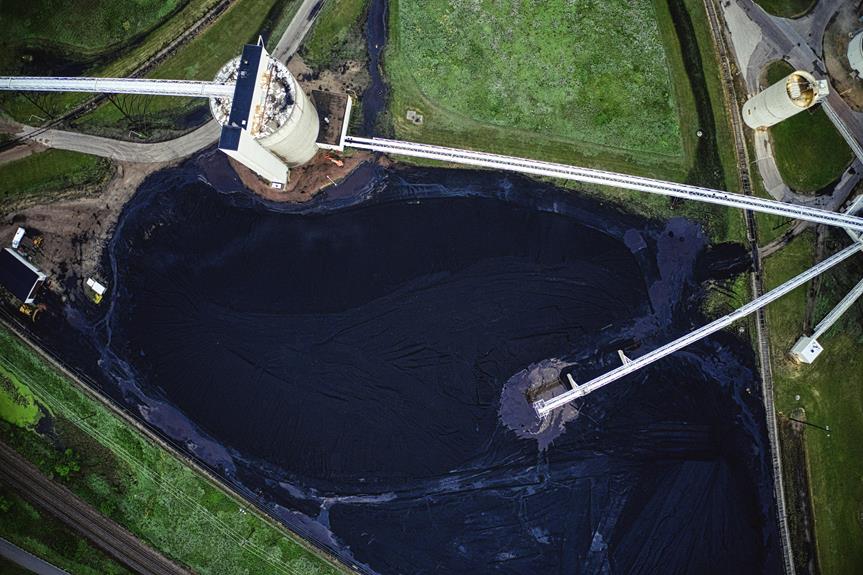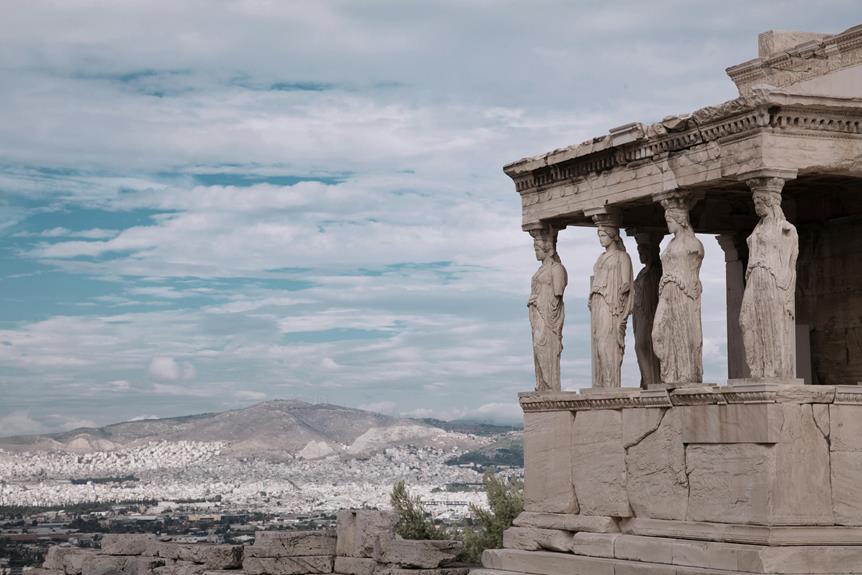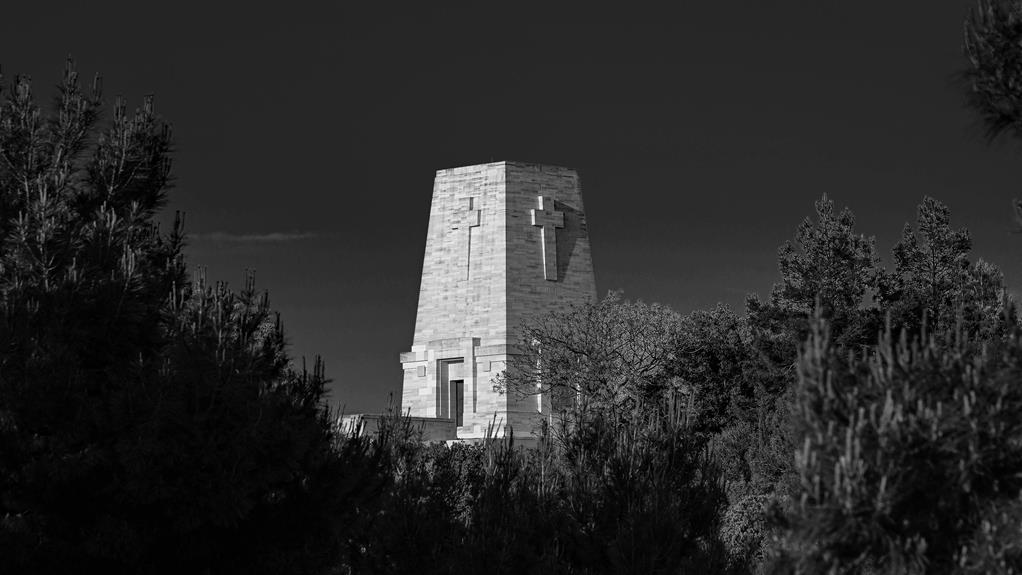Nestled in the Lombardy region, the name Seveso, Italy, often evokes memories of the tragic industrial disaster that occurred in 1976. However, beyond this somber event lies a town that has undergone a remarkable transformation, embracing sustainability and unity in its recovery. With a vibrant cultural heritage, picturesque landscapes, and a blend of Renaissance and medieval architecture, Seveso offers a tapestry of history and charm that invites exploration and contemplation. Its journey from adversity to resurgence prompts reflection on the enduring spirit of communities in the face of challenges, leaving one to ponder the depths of Seveso's narrative.
Key Takeaways
- Seveso, Italy experienced an industrial disaster in 1976 at the Icmesa chemical plant.
- The disaster led to the release of toxic chemicals, causing environmental and health impacts.
- Seveso showcased remarkable recovery through stringent regulations and community resilience.
- The town boasts vibrant cultural heritage celebrated through festivals.
- It offers picturesque landscapes, charming streets, historical buildings, and delightful local cuisine.
Industrial Disaster of 1976
The Industrial Disaster of 1976 in Seveso, Italy, stands as a stark reminder of the catastrophic consequences that can arise from chemical accidents in industrial settings. This incident occurred at the Icmesa chemical plant, where a cloud of toxic chemicals, including dioxin TCDD, was released into the atmosphere, leading to severe environmental impact and health consequences for the residents of the surrounding areas.
The environmental impact of the Seveso disaster was profound. The dioxin contamination resulted in the destruction of crops, livestock, and local wildlife. Soil and water sources were contaminated, posing long-term risks to the ecosystem. The incident highlighted the vulnerability of ecosystems to chemical pollutants and underscored the importance of stringent safety measures in industrial operations.
In terms of health consequences, the residents of Seveso and nearby communities experienced a range of acute and long-term health effects. Immediate symptoms included skin lesions, respiratory issues, and eye irritation. Long-term health risks such as cancer, reproductive disorders, and immune system deficiencies were also observed among the affected population. The incident prompted extensive health monitoring and research initiatives to track the health outcomes of those exposed to the toxic chemicals.
Seveso's Remarkable Recovery
After the Industrial Disaster of 1976, Seveso, Italy, began a notable journey of recovery characterized by strategic interventions and thorough remediation efforts. The remarkable transformation that Seveso underwent in the aftermath of the disaster serves as a proof to the resilience of its community.
Following the tragic event, Seveso implemented stringent environmental regulations and safety protocols to prevent future incidents. These measures not only helped in rebuilding the industrial infrastructure but also guaranteed the safety and well-being of the residents. The remediation efforts focused on decontaminating the affected areas and restoring the natural environment, showcasing a commitment to sustainable development.
Moreover, the community resilience displayed by the residents of Seveso played a pivotal role in the recovery process. The unity and determination exhibited by the locals in the face of adversity fostered a sense of solidarity that strengthened the social fabric of the town. This collective spirit not only aided in the physical reconstruction of Seveso but also contributed to the emotional healing of the community.
Vibrant Cultural Heritage
Amidst Seveso's journey of recovery post the 1976 industrial disaster, the town's vibrant cultural heritage emerges as proof of its resilience and rich historical tapestry. Local traditions play a pivotal role in shaping the cultural identity of Seveso, showcasing a deep connection to the past while embracing modern influences. These traditions, passed down through generations, serve as a reminder of the community's strength and unity in the face of adversity.
One of the most significant aspects of Seveso's cultural heritage is its vibrant array of cultural festivals. These events not only celebrate the town's history and traditions but also provide a platform for residents and visitors to come together in joyous celebration. From religious festivals honoring patron saints to lively folk festivals featuring traditional music and dance, Seveso's cultural calendar is a confirmation of the town's enduring spirit.
Moreover, Seveso's cultural heritage acts as a bridge between the past and the present, fostering a sense of pride and belonging among its residents. The preservation of local traditions and the celebration of cultural festivals serve as a reminder of Seveso's resilience and ability to overcome challenges. Through these cultural expressions, Seveso continues to honor its heritage while embracing the future with optimism and energy.
Picturesque Landscapes and Streets
Seveso, Italy's charm is accentuated by its picturesque landscapes and streets, which offer a visual feast for residents and visitors alike. The town is nestled amidst the stunning natural beauty of the Lombardy region, providing ample opportunities for exploration and relaxation. Nature trails wind through the lush greenery surrounding Seveso, allowing nature enthusiasts to immerse themselves in the serene surroundings and discover the local flora and fauna.
In addition to its natural landscapes, Seveso boasts charming streets that are perfect for leisurely strolls. The cobblestone pathways and quaint alleys are lined with traditional Italian buildings, creating a postcard-worthy setting that captures the essence of small-town Italy. Visitors can meander through the streets, taking in the sights and sounds of daily life in Seveso while soaking up the authentic Italian atmosphere.
Moreover, Seveso offers a culinary experience that is not to be missed. The town is renowned for its delectable local cuisine, featuring a variety of traditional dishes that showcase the rich flavors of Lombardy. From hearty pasta dishes to savory meat-based meals, visitors can indulge in a gastronomic adventure that highlights the region's culinary heritage. Whether dining at a cozy trattoria or sampling street food from local vendors, Seveso's food scene is sure to delight even the most discerning palates.
Historical Buildings and Architecture
Exemplifying a rich tapestry of historical significance, Seveso, Italy showcases a diverse array of architectural marvels that embody the town's storied past. The town's architectural landscape is a blend of Renaissance architecture and medieval castles, each structure offering a glimpse into different periods of history.
Renaissance architecture, characterized by its symmetry, proportion, and harmony with nature, can be observed in several buildings throughout Seveso. Palazzo Arese Borromeo, a prominent example of this style, stands as a tribute to the town's cultural and artistic heritage. Its ornate facades and elegant design reflect the grandeur of the Renaissance period, enchanting visitors with its timeless beauty.
In contrast, Seveso's medieval castles evoke a sense of strength and resilience. Castello Visconteo, with its imposing walls and strategic location, serves as a reminder of the town's military history. The castle's towers and battlements stand as silent witnesses to centuries of change and transformation, offering a fascinating insight into Seveso's past.
Captivating History and Hidden Gems
The fascinating history of Seveso, Italy reveals a wealth of hidden gems waiting to be explored by those keen to uncover its historical narrative. Steeped in centuries of enchanting tales, Seveso boasts a myriad of hidden treasures that offer a glimpse into its rich past.
One such hidden gem is the Church of St. Peter and Paul, a stunning example of medieval architecture that stands as a tribute to the town's religious heritage. Visitors can marvel at its intricate frescoes and Gothic design, immersing themselves in the history that shaped Seveso into what it is today.
Beyond its architectural wonders, Seveso is also a haven for those seeking to indulge in local cuisine. The town's culinary scene is a treasure trove of traditional dishes that reflect the region's gastronomic prowess. From creamy risottos to delectable salamis, Seveso's food offerings are a true delight for the senses.
Exploring the hidden gems of Seveso provides a unique opportunity to investigate the heart of this charming town and uncover the stories that have shaped its identity. Whether wandering through its ancient streets or savoring its local delicacies, visitors are sure to be enchanted by the history and charm that define Seveso.
Frequently Asked Questions
What Safety Measures Are in Place to Prevent Another Industrial Disaster?
Safety regulations play an essential role in preventing industrial disasters by setting standards for companies to follow. Emergency response plans are equally vital, outlining procedures to mitigate and manage crises swiftly. Regular safety audits and training guarantee adherence to protocols.
Companies invest in technology and equipment to enhance safety measures. Collaborations between regulatory bodies, industries, and communities foster a culture of safety and preparedness, minimizing the risk of industrial disasters.
Are There Any Annual Events or Festivals Unique to Seveso?
Despite its rich history and vibrant community traditions, Seveso, Italy does not boast any unique annual events or festivals.
The town, known for its local artisans and art markets, focuses more on daily life and cultural heritage rather than large-scale celebrations.
While other regions may have their grand festivals, Seveso prides itself on its quieter, more intimate gatherings that highlight the essence of its close-knit community.
How Has the Local Cuisine Been Influenced by the Town's History?
The local cuisine in many regions is greatly influenced by historical events and traditions. Italian culinary traditions are deeply rooted in history, showcasing a culinary fusion of flavors and techniques that have evolved over time.
Understanding how local cuisine has been shaped by historical events provides insight into the cultural significance of certain dishes and ingredients. This blend of tradition and innovation reflects the dynamic nature of Italian cuisine.
Can Visitors Participate in Any Outdoor Activities in Seveso?
Visitors can engage in a variety of outdoor activities in Seveso, including exploring scenic hiking trails that offer stunning views and cycling routes that cater to different skill levels.
Nature walks provide opportunities to immerse in the local flora and fauna, while designated picnic spots allow for tranquil relaxation amidst nature's beauty.
These activities cater to a wide range of interests and provide a unique way to experience the area's natural surroundings.
Are There Any Ghost Stories or Legends Associated With the Historical Buildings?
Ghost sightings and haunted buildings are intriguing aspects of many historical sites worldwide. Local folklore often perpetuates supernatural legends tied to certain structures, adding mystique and interest for visitors.
These stories can contribute to the cultural richness of a region, sparking curiosity and fascination among those interested in the paranormal. Investigating such tales can provide a unique lens through which to view the history and architecture of a place.
Conclusion
To sum up, Seveso, Italy has overcome the shadow of the 1976 industrial disaster through stringent regulations and focused remediation efforts.
The town's vibrant cultural heritage, picturesque landscapes, and historical architecture paint a picture of resilience and unity.
With a blend of Renaissance and medieval charm, Seveso stands as a demonstration of the power of community and sustainable development.
The town's hidden gems and intriguing history beckon visitors to explore and appreciate its rich tapestry of resilience and renewal.


